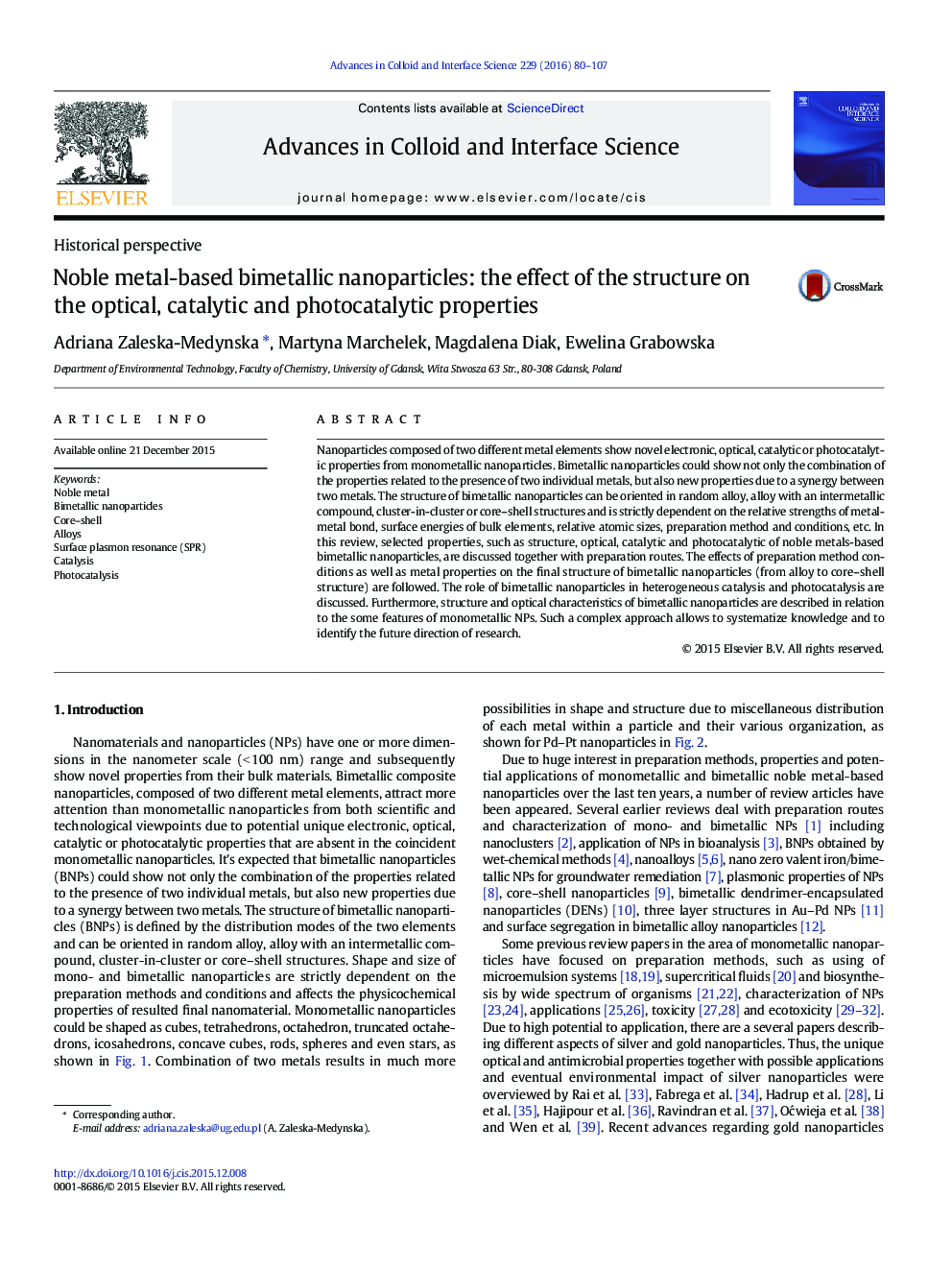| کد مقاله | کد نشریه | سال انتشار | مقاله انگلیسی | نسخه تمام متن |
|---|---|---|---|---|
| 590608 | 1453535 | 2016 | 28 صفحه PDF | دانلود رایگان |
• Metal segregation or miscibility in BNPs depends mainly on metal features.
• Preparation pathway also affected structure of bimetallic particles.
• Alloyed and core–shell BNPs enhanced catalytic activity compared to monometallic NPs.
• Electron transfer between metals in BNPs prevents surface poisoning.
• Alloy BNPs generally enhanced photoactivity of semiconductors.
Nanoparticles composed of two different metal elements show novel electronic, optical, catalytic or photocatalytic properties from monometallic nanoparticles. Bimetallic nanoparticles could show not only the combination of the properties related to the presence of two individual metals, but also new properties due to a synergy between two metals. The structure of bimetallic nanoparticles can be oriented in random alloy, alloy with an intermetallic compound, cluster-in-cluster or core–shell structures and is strictly dependent on the relative strengths of metal-metal bond, surface energies of bulk elements, relative atomic sizes, preparation method and conditions, etc. In this review, selected properties, such as structure, optical, catalytic and photocatalytic of noble metals-based bimetallic nanoparticles, are discussed together with preparation routes. The effects of preparation method conditions as well as metal properties on the final structure of bimetallic nanoparticles (from alloy to core–shell structure) are followed. The role of bimetallic nanoparticles in heterogeneous catalysis and photocatalysis are discussed. Furthermore, structure and optical characteristics of bimetallic nanoparticles are described in relation to the some features of monometallic NPs. Such a complex approach allows to systematize knowledge and to identify the future direction of research.
Figure optionsDownload as PowerPoint slide
Journal: Advances in Colloid and Interface Science - Volume 229, March 2016, Pages 80–107
